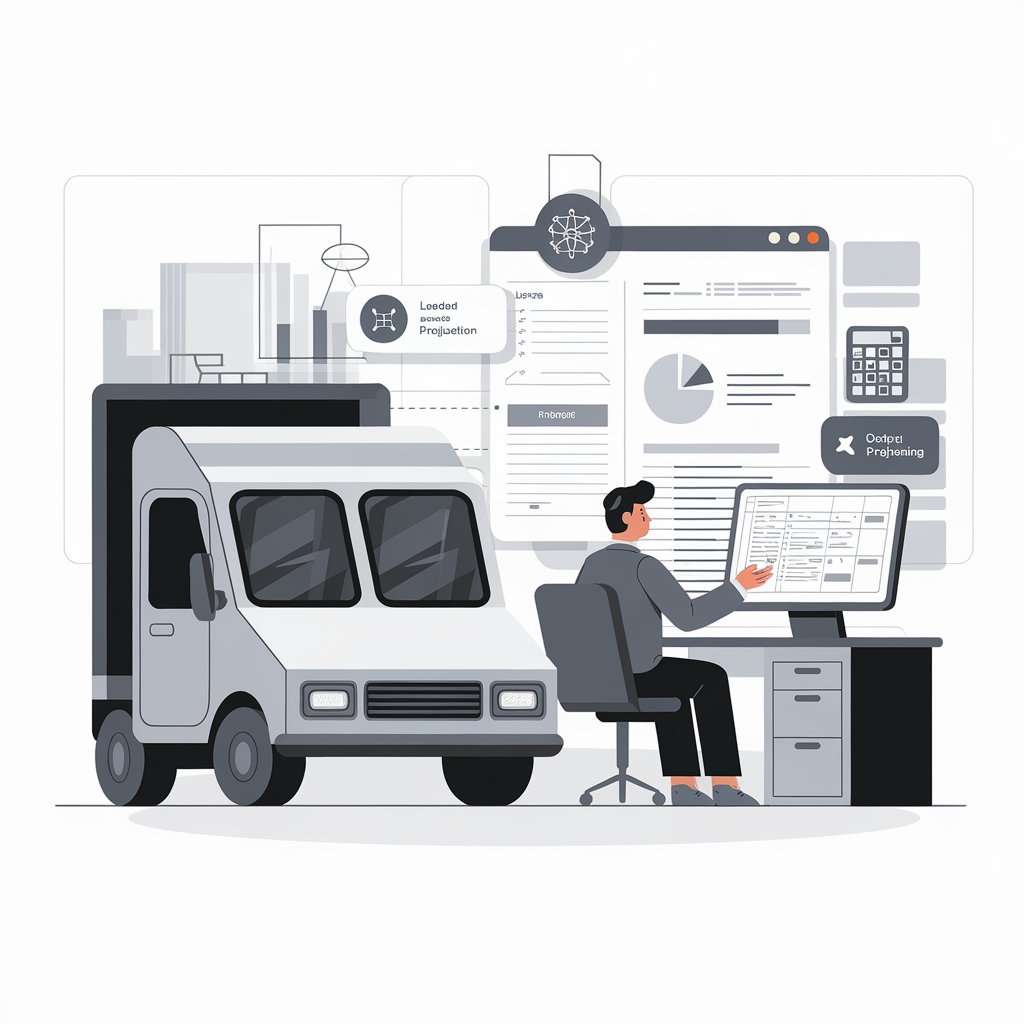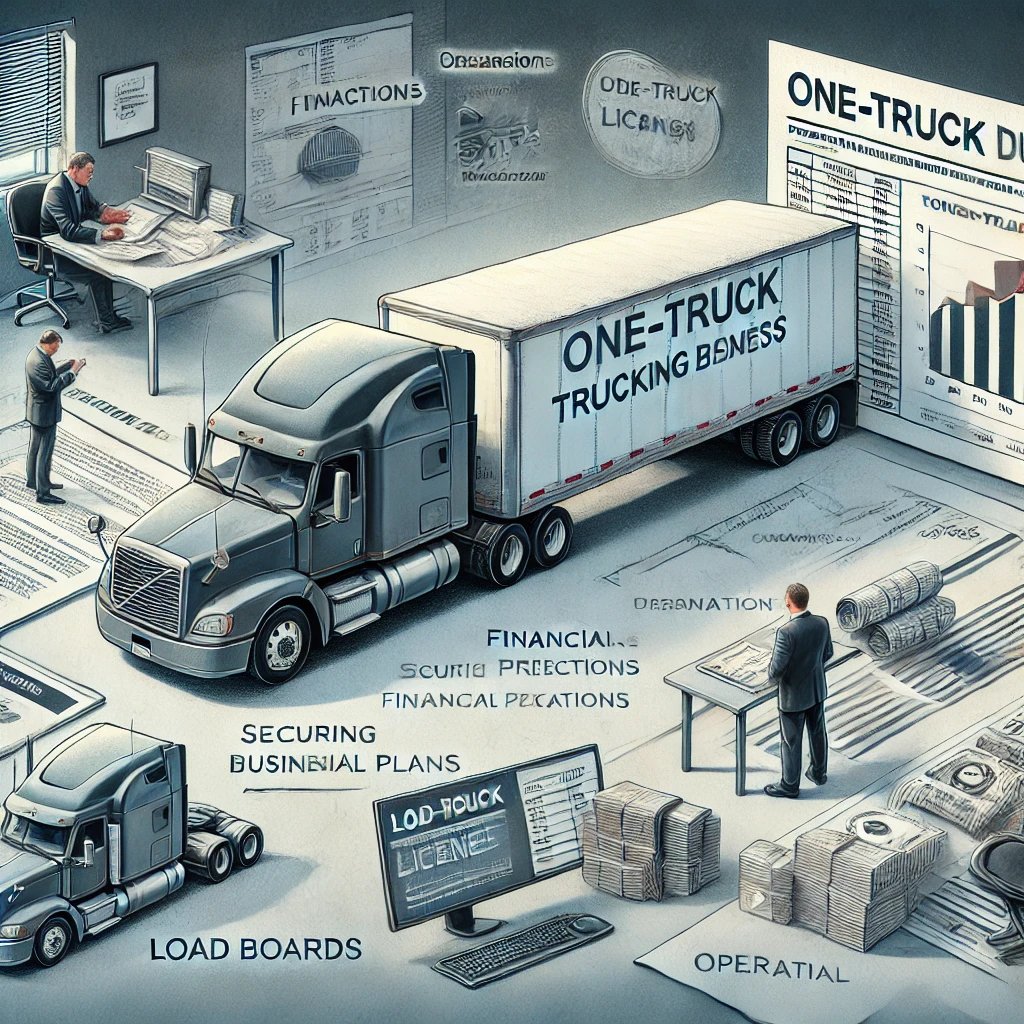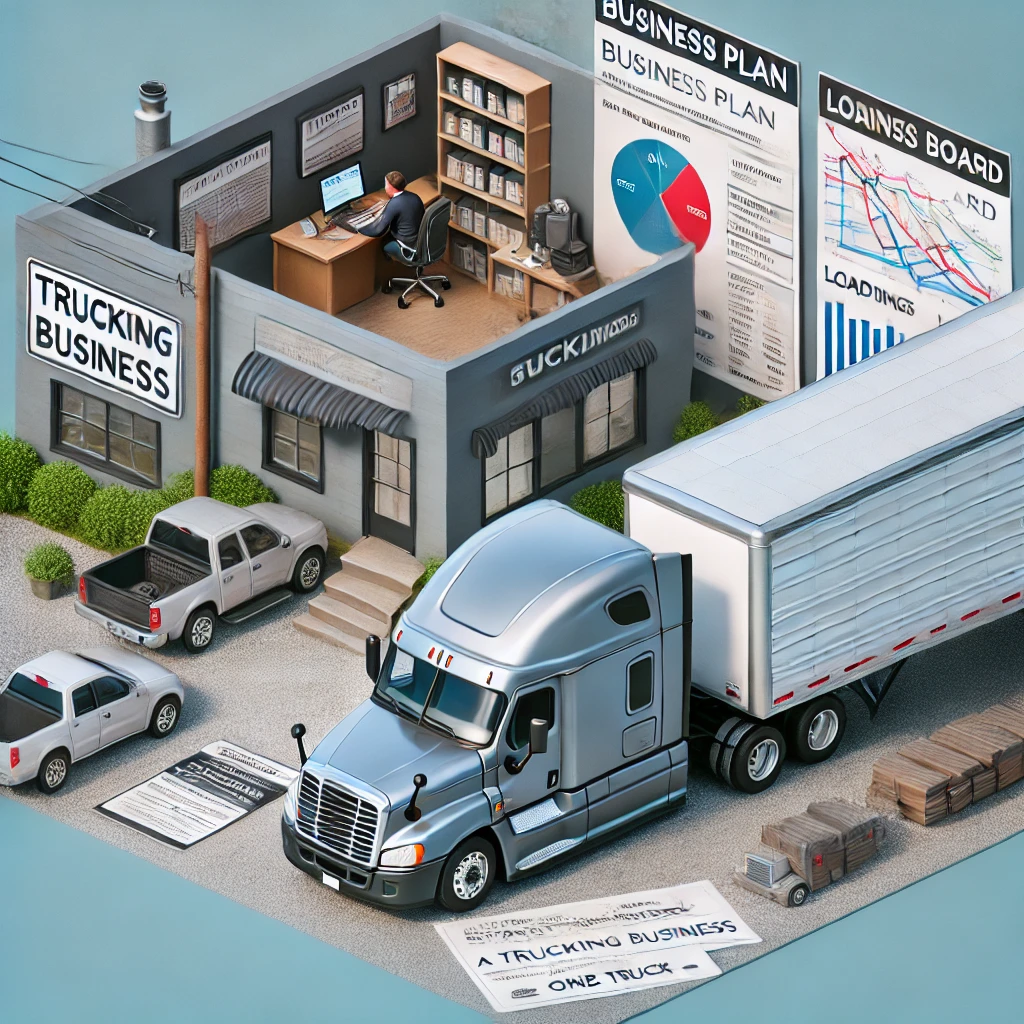How to Start a Trucking Business with One Truck: A Comprehensive Guide
Starting a trucking business with just one truck is an excellent way to enter the transportation industry with minimal initial investment. This approach allows you to learn the ropes of the business while minimizing risk. Here's a step-by-step guide to help you get started.

1. Develop a Business Plan
- Define your niche (local, long-haul, specialized cargo, etc.)
- Conduct market research to identify potential clients and competitors
- Create financial projections including startup costs, operating expenses, and revenue forecasts
- Set clear, achievable goals for your first year of operation
2. Legal and Administrative Setup
- Choose a business structure (typically LLC or Sole Proprietorship for one-truck operations)
- Register your business name with state authorities
- Obtain an Employer Identification Number (EIN) from the IRS
- Apply for necessary licenses and permits:
- Commercial Driver’s License (CDL)
- USDOT Number
- Motor Carrier (MC) Number for interstate commerce
- International Registration Plan (IRP) tag if operating in multiple states
- International Fuel Tax Agreement (IFTA) decal for interstate operations

3. Secure Financing
- Calculate your startup costs (truck, insurance, licenses, initial operating capital)
- Explore financing options:
- Personal savings
- Business loans
- Equipment financing
- Consider lease-to-own options for the truck
4. Purchase or Lease Your Truck
- Decide between new or used truck based on your budget and business plan
- Consider factors like fuel efficiency, maintenance costs, and reliability
- Ensure the truck meets all regulatory requirements
5. Obtain Insurance
- Secure commercial auto liability insurance
- Consider physical damage coverage for your truck
- Obtain cargo insurance to protect against loss or damage of freight
- Look into occupational accident insurance for yourself

6. Establish Your Operations
- Set up a home office or small commercial space
- Implement systems for:
- Booking loads (consider load boards like DAT or Truckstop.com)
- Managing schedules
- Tracking expenses and income
- Maintaining your truck
7. Build Your Client Base
- Network with shippers, freight brokers, and other industry contacts
- Create a professional website and social media presence
- Consider starting with a contract with a single client to ensure steady work
- Gradually expand your client base as you become more established
8. Manage Your Finances Carefully
- Open a separate business bank account
- Keep meticulous records of all income and expenses
- Set aside money for taxes (consider working with an accountant familiar with the trucking industry)
- Create an emergency fund for unexpected repairs or downtime
9. Comply with Regulations
- Familiarize yourself with Hours of Service (HOS) regulations
- Implement an electronic logging device (ELD) to track your driving hours
- Stay up-to-date with DOT regulations and safety standards
- Plan for regular truck inspections and maintenance

10. Optimize Your Operations
- Plan routes efficiently to minimize empty miles
- Implement fuel-saving strategies (proper tire inflation, reducing idle time, etc.)
- Consider joining a fuel card program to save on fuel costs
- Continuously educate yourself on industry best practices
11. Plan for Growth
- Reinvest profits into your business
- Consider expanding services or adding specialized equipment to your truck
- Plan for eventually adding more trucks and drivers as your business grows

Tips for Success
- Prioritize Safety: Your safety record is crucial for your reputation and insurance rates.
- Provide Excellent Customer Service: Reliability and professionalism will help you stand out.
- Network Constantly: Building relationships in the industry can lead to better opportunities.
- Stay Organized: Good record-keeping is essential for financial health and regulatory compliance.
- Take Care of Your Health: Long hours on the road can take a toll; prioritize your physical and mental well-being.
Common Challenges and Solutions
- Challenge: Finding consistent loads Solution: Build relationships with reliable brokers and shippers, and consider load boards for additional opportunities.
- Challenge: Managing cash flow Solution: Maintain a cash reserve and consider invoice factoring for quicker payment on completed jobs.
- Challenge: Dealing with fluctuating fuel prices Solution: Implement fuel-saving strategies and consider fuel surcharges in your pricing.
- Challenge: Balancing driving and business management Solution: Set aside specific times for administrative tasks and consider using mobile apps to manage business on the go.
- Challenge: Handling maintenance issues Solution: Stick to a rigorous preventative maintenance schedule to avoid unexpected breakdowns.
Conclusion
Starting a trucking business with one truck requires careful planning, hard work, and dedication. By focusing on providing reliable service, managing your finances carefully, and staying compliant with industry regulations, you can build a strong foundation for a successful trucking business. Remember, many of today’s large trucking companies started with just one truck. With persistence and smart management, your one-truck operation can grow into a thriving business in the dynamic world of transportation.
